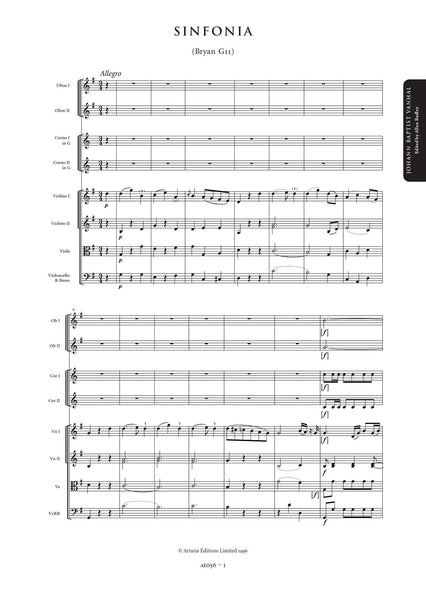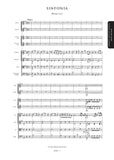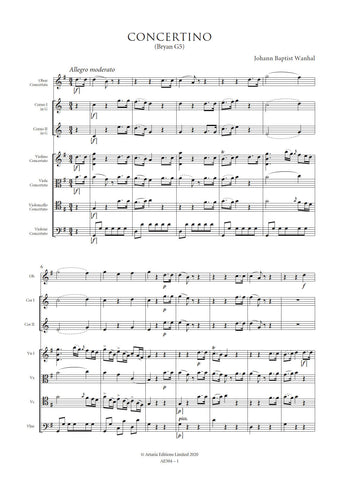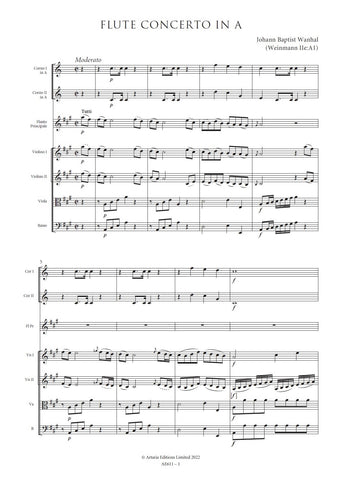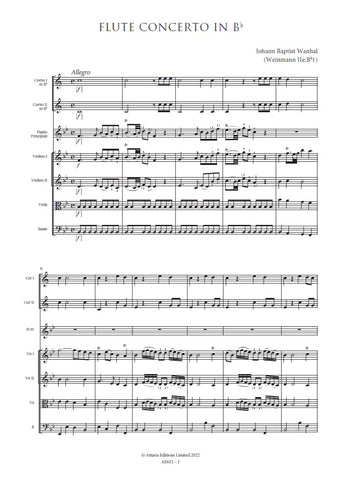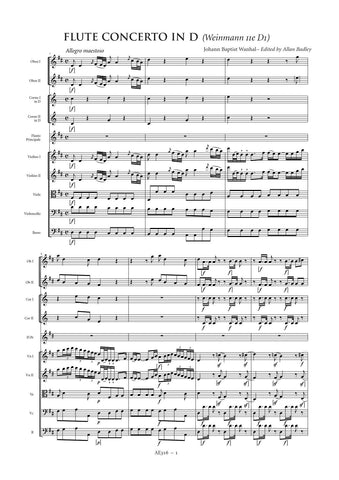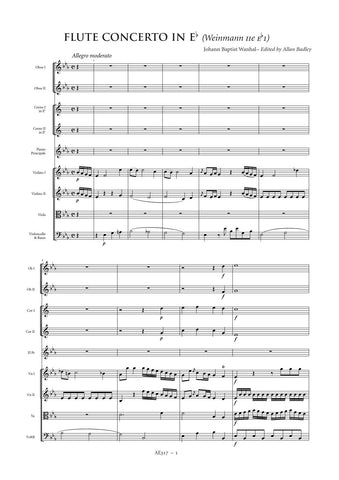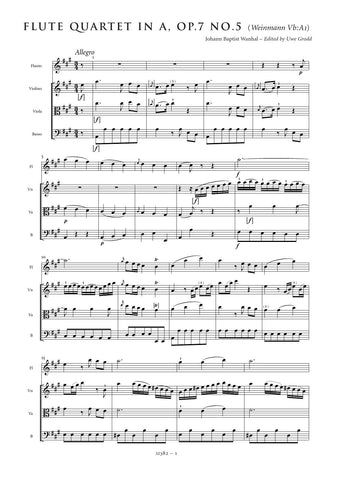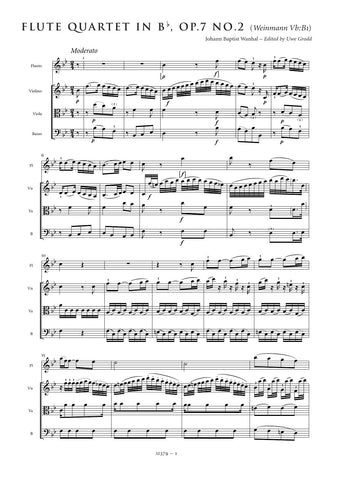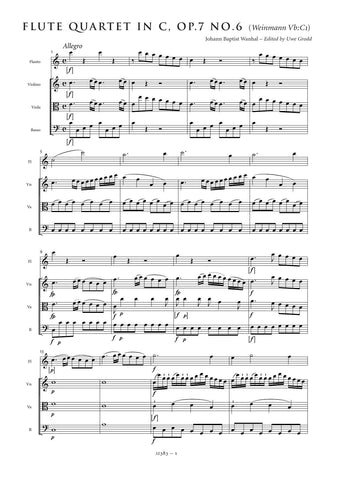Wanhal, Johann Baptist: Symphony in G major (Bryan G11) (AE056) – sheet music
Previous Product Next Product
Description |
Wanhal, Johann Baptist (1739-1813)
|
||||||||||||||||||
Audio sample |
|||||||||||||||||||
Details |
The symphonies of Johann Baptist Wanhal  (1739-1813), one of the most prolific and important of Haydns Viennese contemporaries, are among the most important works of their kind from the late-18th century. Bold and imaginative, powerful and lyrical, Wanhals symphonies are only now beginning to win wider recognition as the masterpieces they are. Wanhals sinfonia G11 is one of his later works; it was probably composed some time during the years 1775-76. The charming opening movement is every bit as finely wrought as its counterpart in d2. The Andante molto, scored for strings with a flute which mostly doubles the first violin at the upper octave, is a charming movement of elegant simplicity.  Although the flute part is not strictly necessary it lends a wonderful delicacy of colour to the orchestration. The Menuetto and Trio is marked Allegretto, an indication that Wanhal believed the tempo should move along. The melodic quality and symmetrical construction of both the Menuetto and Trio betray their origins in the dance. The rhythmic after-beats in the winds together with the rollicking character of the string melody in the Trio suggest the character of a Lndler. The tempo and character of the opening of the fourth movement seem better fitted to a leisurely opening movement than a finale but this impression is dispelled in the powerful development section with its continuous forte marking and vigorous counterpoint. Allan Badley |




